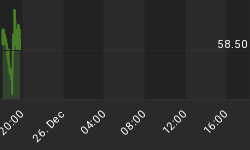08:15 EST, Mon 20 July
Gold "Attracting Investment" as Price Jumps vs. All Currencies, Physical Buying "Provides Support"
THE PRICE OF GOLD rose sharply against the US Dollar on Monday morning in London, jumping 1.6% to a 6-week high at $954 an ounce as world stock markets also rose yet again.
Rising for the fifth session in six, Gold initially held flat against the world's other major currencies as the Dollar fell to a new July-low vs. the Pound. The Euro hit a 7-week high at $1.4245.
But the Gold Price in Sterling then rose 0.6% to reach its best level in 5 weeks above £577 an ounce. For Eurozone investors now Ready to Buy Gold, the price gained 0.8% to €669.50 an ounce - its best level so far in July.
"We're in an upside trend now," said Michael Kempinski at Commerzbank to the Dow Jones newswire earlier today.
"The upward trend is gathering momentum and will attract some fresh Gold Investment," agreed a London dealer in a note to clients.
"The next true resistance is not seen until 990," says a technical report from Scotia Mocatta, pegging support at $927.50 an ounce.
Early trading was light on Monday across stocks, bonds, currencies and bullion, with Japan closed for the Ocean Day holiday while the school summer holidays began in Europe.
Crude oil rose above $64 per barrel, pulling broad commodity indices more than 1.5% higher.
Government bond prices ticked lower across the board, sending the 10-year US Treasury yield up to 3.86%.
London's FTSE-100 share index meantime added 1.4% to a six-week high on takeover rumors in the insurance sector. Mid-cap Gold Mining stock Peter Hambro rose 7.4% after reporting a 54% improvement in first-half output from its operations in Russia.
Predicting a second-half Gold Price "the same or higher", eponymous chairman Peter Hambro said he remains "bullish" on gold because of the "fear of inflation in the United States."
New data released after Friday's close by US derivatives regulator the CFTC showed hedge funds and other large speculators cutting their bullish position in Gold Futures and options last week to its lowest level since early May.
Averaging a near-perfect correlation in June, the relationship between speculative trading and the Gold Price has broken down in July.
The "net long" position held by speculative traders shrank by 5% during the first two weeks of this month to equal 499 tonnes. The price of Gold, in contrast, rose 1%.
"The Dollar Gold Price is now hostage to the fortunes of things much bigger than the metal itself," says the latest Metals Monthly from the VM Group here in London - produced for BNP Paribas and Fortis Bank.
"The sustained collapse in India's gold imports speaks volumes regarding physical buying. The Indian monsoon this year is poor, which will impact farm earnings and will further depress the country's gold imports over the next 12 months."
The world's largest single gold consumer market, India has seen gold imports fall by one-half so far in 2009 from last year.
"Short-term prices spikes can lead to some consumer hesitancy," said local World Gold Council director Ajay Mitra today, "but despite rises during the last week, Indian trade buyers have continued to invest in stock building.
"They view the Gold Price trend as one that will endure and are committed to preparing for the upcoming [autumn] festive season as usual."
Overall, "The physical gold market still provides good support," says today's Commodity Daily from Standard Bank here in London.
"Furthermore, should the US Dollar see a broad-based depreciation in coming months, gold buying could increase."
Tomorrow and Wednesday, US Fed chairman Ben Bernanke will testify before the Senate Banking Committee, and "Investors will be looking for signs of change to the Fed's quantitative easing program," says the Financial Times, currently set at $300 billion.
Minutes from the Fed's June meeting, released last week, showed some board member worried "that increases in purchases of Treasury securities might have little or no effect on long-term interest rates unless the increases were very sizable."
Other policy-makers, however, "were concerned that announcements of substantial additional purchases could add to perceptions that the federal debt was being monetized."
On the data front today, Germany's Producer Price Index showed a surprise decline of 4.6% for the year to July, while the Bank of England reported that broad money-supply growth in the UK went negative in June, the first such drop in M4 since June 2005.
June's monetary deflation of £3.2 billion in private-sector cash, bank accounts and short-term bonds came in stark contrast to the previous year's monthly average of £22.8bn growth - itself four times greater than the previous quarter-century average of M4 growth.















